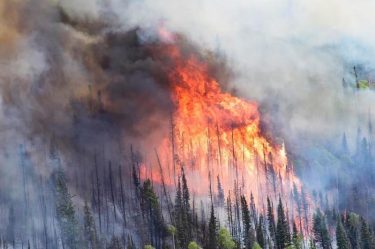 Across the American West, managers of fire-prone landscapes are increasingly setting small fires to prevent larger, more destructive ones. Commonly called prescribed burns, these targeted, controlled fires keep forests healthy by reducing the buildup of grasses, leaves, branches and other debris that can fuel larger wildfires and smoke out nearby communities.
Across the American West, managers of fire-prone landscapes are increasingly setting small fires to prevent larger, more destructive ones. Commonly called prescribed burns, these targeted, controlled fires keep forests healthy by reducing the buildup of grasses, leaves, branches and other debris that can fuel larger wildfires and smoke out nearby communities.
But smoke from prescribed burns also presents health risks. Today’s forest managers must ask themselves — how much prescribed burning is too much? When do the long-term benefits of fuel reduction no longer outweigh the short-term smoke costs? And how can nearby communities better prepare for a fire season?
An international team led by researchers at the University of Washington built a framework to help land managers assess the air quality implications of land management scenarios with different levels of prescribed burning. To apply the framework, researchers linked together a series of models that estimate the smoke effects of various levels of prescribed burning on ecosystems and nearby communities. Ernesto Alvarado, UW professor of environmental and forest sciences, is a co-author on the two papers that appear in Nature Sustainability and Environmental Research Letters.
Read more at UW News »
